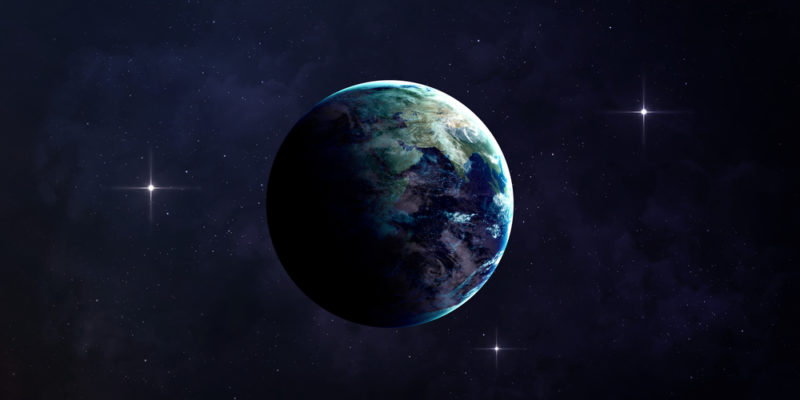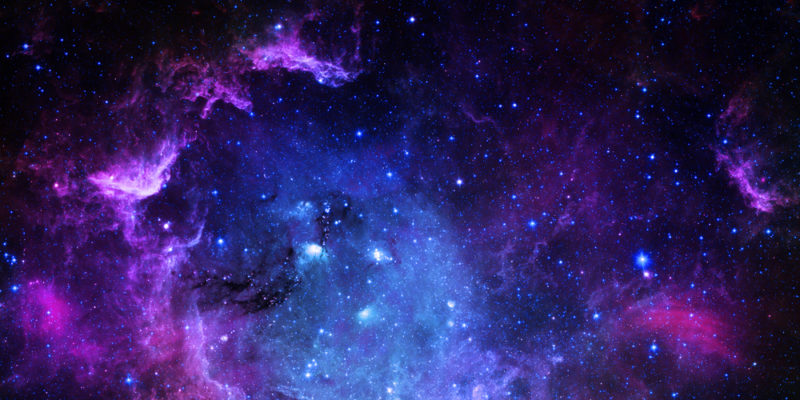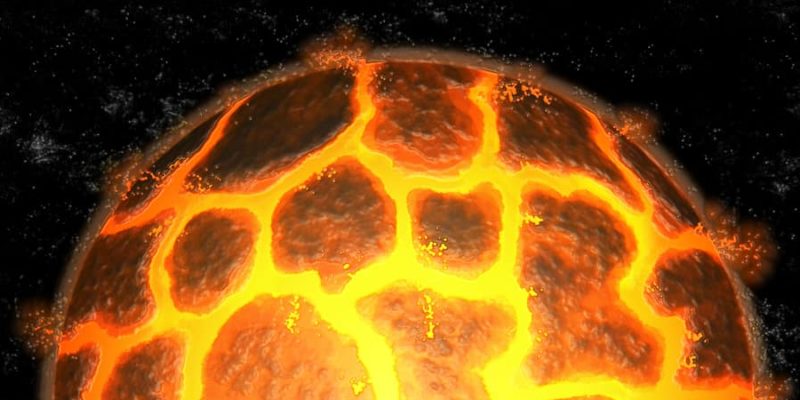We explore the Precambrian, and describe its characteristics and divisions. In addition, we discuss how the Earth was formed, and how life on the planet began.

What was the Precambrian?
The Precambrian is the earliest and longest time period in Earth's history. It spanned approximately 3.96 billion years, ending about 540 million years ago with the beginning of the Phanerozoic Eon and its first era, the Paleozoic. The beginning of the Precambrian Eon coincides with the origin of planet Earth, about 4.5 billion years ago, and covers most of its geological history.
During the Precambrian, planet Earth formed, the earliest geological events took place, and life on the planet originated. Despite its importance, studying the Precambrian is a difficult task, since nearly no fossil records have survived to the present day, and the rocks formed during Precambrian time have changed considerably over billions of years of transformation.
- See also: Paleozoic Era
Characteristics of the Precambrian
The main characteristics of the Precambrian are:
- It began 4.5 billion years ago, with the formation of planet Earth.
- It spanned 3.96 billion years, accounting for 88% of Earth's geological history.
- It ended 540 million years ago with the beginning of the Phanerozoic Eon.
- It is subdivided into three eons: the Hadean, the Archean, and the Proterozoic.
- The temperature of the atmosphere was extremely high during the early Precambrian time, eventually cooling over time.
- The cooling of the Earth made the formation of the first rock structures possible.
- Water and the earliest forms of life appeared on the planet during this eon.
Division of the Precambrian
The Precambrian Eon is subdivided into three eons:
- Hadean Eon. The oldest eon, it began with the formation of the Earth 4.6 billion years ago. It is not subdivided into geological eras.
- Archean Eon. It began 3.8 billion years ago and is subdivided into three eras:
- Paleoarchean Era. It began 3.8 billion years ago and spanned 400 million years.
- Mesoarchean Era. It began 3.4 billion years ago and spanned 400 million years.
- Neoarchean Era. It began 3 billion years ago and spanned 500 million years.
- Proterozoic Eon. It began 2.5 billion years ago and ended 540 million years ago. It is subdivided into three eras:
- Paleoproterozoic Era. It began 2.5 billion years ago and spanned 900 million years.
- Mesoproterozoic Era. It began 1.6 billion years ago and spanned 700 million years.
- Neoproterozoic Era. It began 900 million years ago and spanned 360 million years.

Formation of planet Earth

There are many theories that account for the formation of our planet and the solar system. The most widely accepted theories propose that it was a process of sedimentation and stabilization of the same matter of which the Sun is composed, or of matter produced during its origin. This matter is thought to have first gathered in a planetesimal disk (young stars that begin to form planets) over 4.5 billion years ago.
According to this theory, known as the "nebular hypothesis", our planet formed from a cloud of dust and gas that began to attract each other due to gravity. Over time, the planetesimals would have condensed enough to come to have material existence and a defined shape. Thus would have formed planet Earth and the rest of the solar system.
Geology of the Precambrian

Earth is believed to have formed approximately 4.6 billion years ago from material surrounding the Sun. Initially, it was a hot ball of molten minerals caused by the accumulation of energy during the formation process.
As the Earth cooled, the crust began to solidify, forming a more rigid outer layer over the molten core. Thus, due to the solidification and cooling of the crust, a gradual process began in which cratons were formed. Cratons are stable, rigid areas of the Earth's crust that can be considered precontinental cores.
The process of convergence and collision of cratons is key to understanding the formation of continents. As cratons moved and collided, material accumulated that eventually became the cores of continents. The oldest rock formations, called shields or massifs, originated during the Archean Eon, about 3.5 billion years ago.
Climate of the Precambrian
Early in the Precambrian, the temperature in the proto-atmosphere, which was composed mainly of water vapor, carbon dioxide, sulfur, ammonia, and nitrogen, was extremely high. However, terrestrial volcanic activity released large amounts of carbon dioxide and water vapor, gradually cooling planetary temperature to 212 °F (100 °C) about 3,800 million years ago.
Only then did liquid water begin to form, giving rise to proto-oceans. Thus began the planet's first global cooling, which continued into the Proterozoic Eon (especially during the Neoproterozoic Era, in the Cryogenian Period), when there was significant cooling with major drops in temperature, and the first glaciations occurred.
Volcanic activity
Volcanic activity was very important during the early stages of the Precambrian. The volcanoes of this period, much larger and more active than present-day volcanoes, spewed out large amounts of lava which, upon cooling, thickened the Earth's crust.
In this way, volcanic events during the Precambrian not only shaped Earth's geography but also influenced the chemical composition of the atmosphere and oceans. The emission of volcanic gases, such as carbon dioxide and water vapor, played an important role in climate regulation and the formation of the first oceans. In addition, volcanic activity released elements and minerals that were essential for the development of life.
The origin of life
The most widely accepted hypothesis suggests that life on the planet began between 4,280 and 3,770 million years ago, when water vapor began to condense and the earliest reservoirs of liquid water appeared.
While the exact way in which life originated is uncertain, it is believed that it may have originated in microscopic bubbles formed in oceans, which contained certain chemical elements. From these bubbles, more complex and functional structures would have been created, managing to replicate themselves. This would have led to the emergence of the first proto-cells, setting the stage for evolution.
The Great Oxidation Event

The Great Oxidation Event began approximately 2.4 billion years ago, during the Proterozoic Eon. Prior to this event, the Earth's atmosphere contained very low levels of oxygen, so that existing life was not dependent on it for metabolic processes.
The release of oxygen into the atmosphere occurred primarily as a result of photosynthetic activity in cyanobacteria, which are microscopic organisms capable of photosynthesis. Through this process, these bacteria captured carbon dioxide from the atmosphere and released oxygen. As cyanobacteria proliferated, oxygen began to accumulate in the atmosphere and oceans. This substantial rise in oxygen due to photosynthetic activity is referred to as the Great Oxidation Event.
Another consequence of the Great Oxidation Event was the formation of the ozone layer in the stratosphere. Oxygen released by cyanobacteria reacted with the ultraviolet radiation from the Sun creating ozone molecules, which formed a protective layer around the Earth. The ozone layer blocked much of the harmful ultraviolet radiation, allowing various life forms to colonize surface waters and land without being subjected to lethal levels of radiation.
The Great Oxidation Event also had a profound effect on biological evolution, as the rising availability of oxygen enabled the development of aerobic organisms, that is, organisms that rely on oxygen for survival.
Explore next:
References
- AstroMía. (s.f.). Historia geológica: el Precámbrico. https://www.astromia.com/
- Tarbuck, E. y Lutgens, F. (2005). Ciencias de la Tierra. Una introducción a la geología física. Pearson Educación.
Was this information useful to you?
Yes NoThank you for visiting us :)